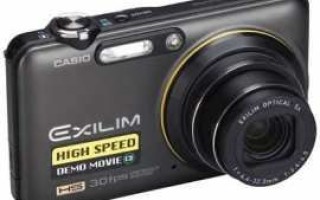Review of the “nimble” Casio Exilim EX-FC100
Review of the “nimble” Casio Exilim EX-FC100
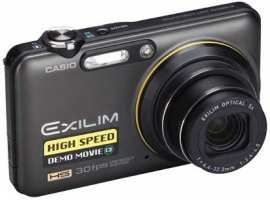
In order to be in the right place at the right time, to meet a fast-paced event fully armed, the camera should be compact, if possible, pocket-sized.
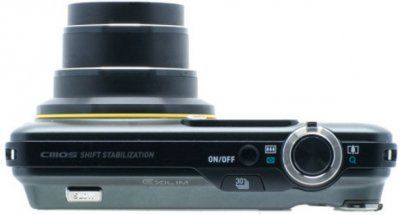
And this one appeared in the Casio camera lineup in 2009. Meet - Casio Exilim EX-FCIOO.
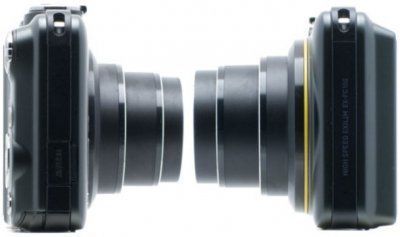
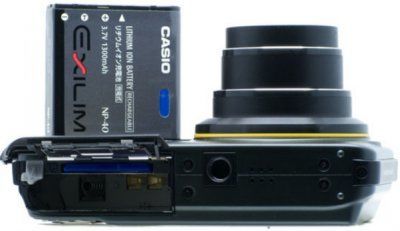
It looks like an ordinary compact. It’s small, if you put it in your pocket, you’ll forget it. Functionally not deprived. Autofocus and manual focusing. The autofocus frame moves within the frame - manually and automatically when tracking the subject. Continuous autofocus and face detection. Exposure compensation. Optical stabilizer (matrix shift). A histogram at the time of shooting, and a detailed one - brightness and color channels. Multi-segment evaluative, center-weighted and spot metering. Adjustable flash power. Adjust image sharpness, saturation and contrast. High definition video recording 720p (1280×720).
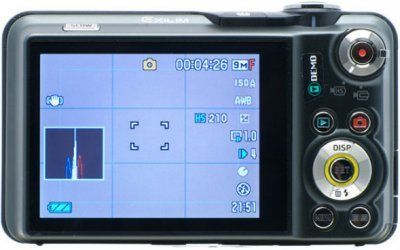
The general style of Casio cameras is obvious. Control buttons are in the usual places. The buttons themselves are metal with engraving, and their functions are well known. Something unusual is the video recording button located under the thumb. The switch around it selects the type of video recording - HD 720p or high-speed (up to 1000 frames/s).
The SET button in the center of the multi selector calls up the quick menu. In addition to the usual filming options, it also contains parameters related to high-speed shooting. The screen is not the largest, but has very large viewing angles. You can comfortably shoot from any position. The body is slightly matte and therefore not too slippery.
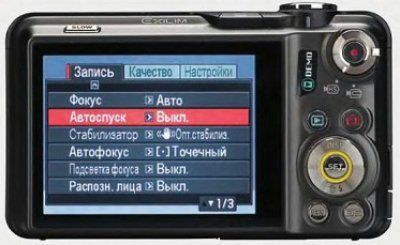
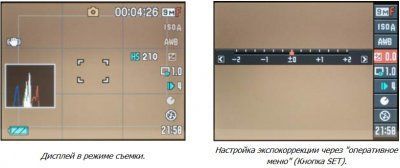
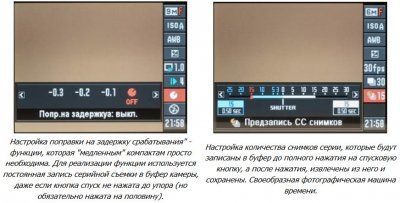
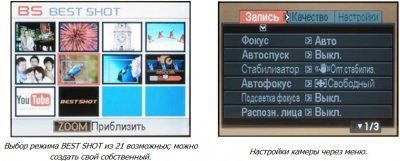
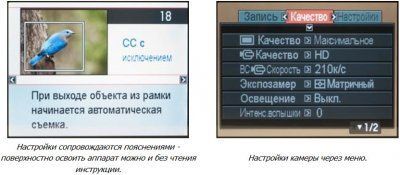
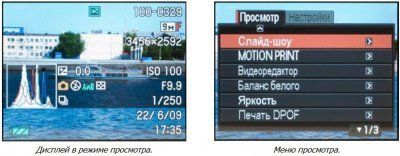
As you can see, there is everything you need and nothing extra. If there's anything missing, it's just a little bit - exposure bracketing and highlighting the shadows in the image wouldn't hurt.
If anyone has forgotten that the Exilim EX-FC100 is a high-speed camera, then it’s time to remind you. Yes, she herself will remind you - on the top cover of the case there are two unusual buttons “30” and “Slow”. The first switches to burst photography mode at a speed of 30 frames/s (with a resolution of 6 megapixels!). The second starts shooting at the same speed, but at the same time the frames of the series recorded in the camera buffer are shown on the screen in slow motion. By pressing the shutter button, one you like can be saved to the memory card.
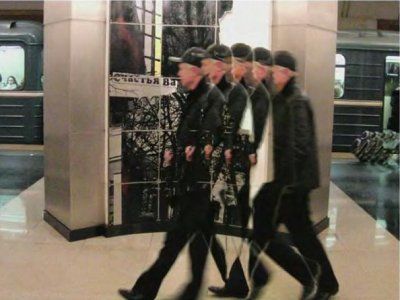
The “Multimotion” story program is based on high-speed continuous shooting. From several frames taken in 1 second (the shooting pace is adjustable, maximum 30 frames/sec), the camera will collect one. The faster the object moves, the stronger the effect.
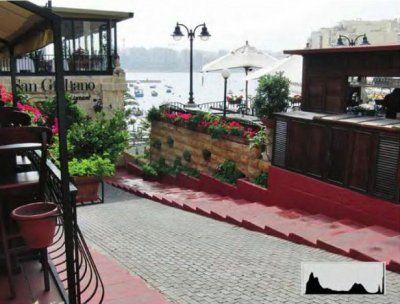
Operation of multi-zone evaluative exposure metering. The overall tonality of the backlit frame is slightly exaggerated, and the bright whitish sky has lost detail. A slight exposure adjustment of -1/3 EV is needed.
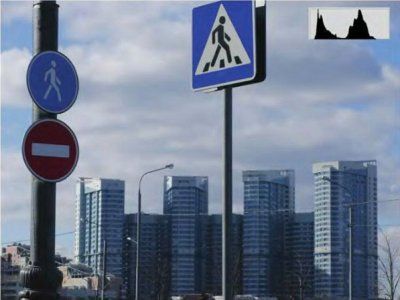
Operation of multi-zone evaluative exposure metering. Scenes with a standard brightness distribution are reproduced almost perfectly. The histogram allows you to increase contrast without losing detail in the highlights.
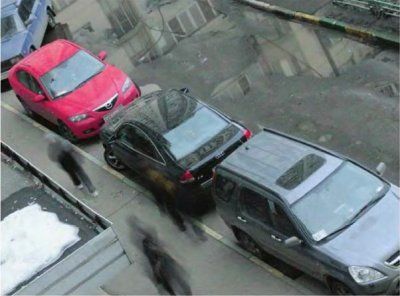
In the High-Speed Digital Stabilizer program, a sharp photograph is obtained by software processing a series of frames. The mode works well, but there is a side effect - moving objects turn out to be very blurred.
The maximum resolution in the center of the frame reaches 2230 lines (0.86 lines/pixel) in the normal zoom position. Sharpness is high across the entire frame, while edge resolution lags slightly. The uniformity of illumination of the frame is also good. Even at wide angles with the aperture wide open, vignetting does not exceed half an EV stop. Geometric distortion is below the noticeability threshold; at short focus the barrel is less than 1.5%. A fairly powerful macro mode at short focus provides sharpness across the entire field without noticeable geometric distortion.
The camera has a stabilization mode based on high-speed shooting. but with a resolution of 6 megapixels. Laboratory photography has shown that the high-speed night shooting mode provides detail proportional to the decrease in resolution.
But high-speed daytime shooting allows you to gain a little in sharpness.
In the rendering of saturated colors, there is a decrease in the distinguishability of yellow and green tones, accurate reproduction of orange and a noticeable difference between scarlet and red-crimson shades.
Accurate reproduction of yellow, green, blue and magenta midtones in daylight. There is a noticeable (dE=20) shift of green-blue tones to blue. In the light of incandescent lamps, the saturation of yellow halftones is reduced. White balance presets are accurate. Daylight and incandescent light are brought to a color temperature of 6700 K. Autobalance for incandescent lamps “like everyone else” is Ttsv-3450K.
The dynamic range is wide, almost 10 stops EV. The characteristic curve is classic, with a smooth rise in the shadows and a linear portion in the midtones.
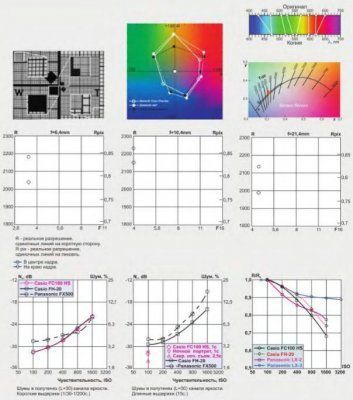
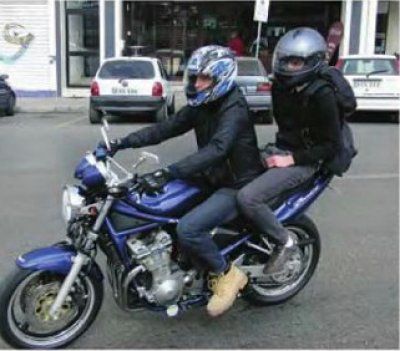
How to photograph a motorcyclist speeding past? In High-Speed Shooting, the camera will start shooting when the subject enters the frame. The mode can be configured so that pictures are recorded even before this event.
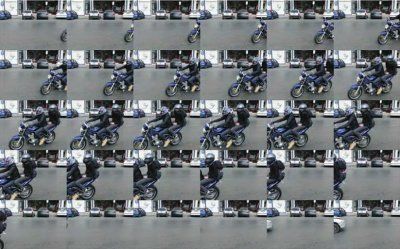
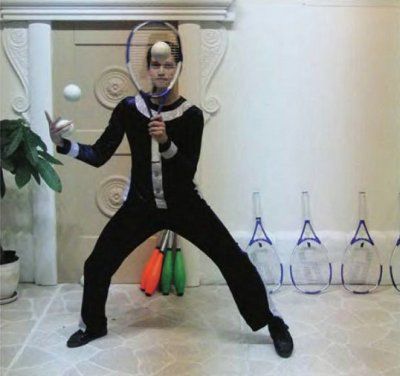
With a regular camera I would hardly have caught such a moment. And in the FC100 you just need to turn on the high-speed shooting mode. At 30 fps, the camera will shoot for 1 second. If the speed is reduced, the duration of the series will increase proportionally.
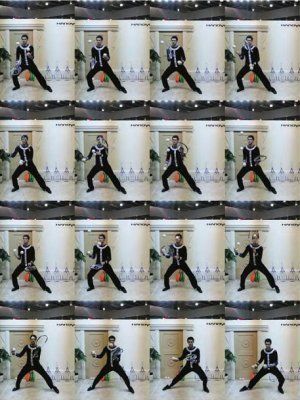


Even at macro distance, the built-in flash works very correctly. A correctly selected impulse preserved all the details of the flower’s texture.
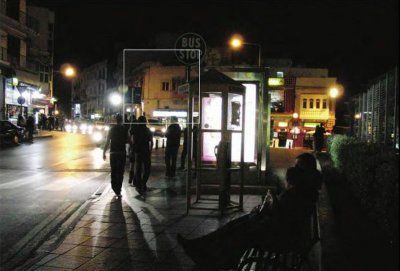
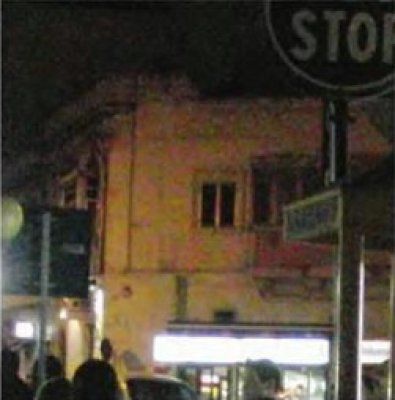
Shot at ISO 1600. There is a lot of chromatic noise, and the noise reduction greatly blurred the image details.
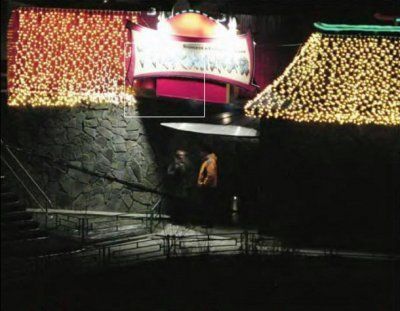
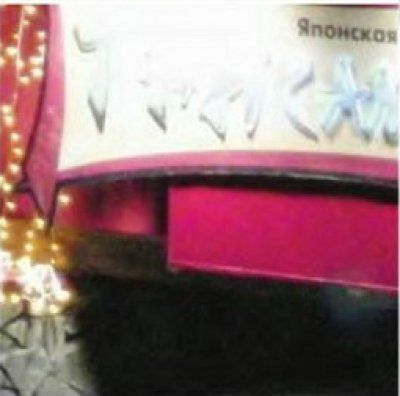
Shot at 157mm focus and 1/13s shutter speed. A sharp image was achieved thanks to the High Speed Digital Night Scene program. ISO 1600, but there is surprisingly little noise.
But it's not limited to just high-speed shooting. It turns out that an image stabilization mode can be implemented based on it. In it, the camera shoots a series of images in a second, and then the processor assembles one sharp one from them. And he does it efficiently.
In high speed mode, pictures are continuously recorded into the camera buffer. To ensure you don’t miss the climax, you can set how many of them, made before pressing the shutter button, will be saved to the card. It must be admitted that detailed mastery of all the intricacies of high-speed photography will require considerable time and effort. But, having gone through this, you will be amazed how many moments in today's fleeting world that were previously inaccessible can be easily preserved in memory with the help of the Casio Exilim EX-FC100.
Casio Exilim EX-ZR200 review - bet on speed
In our laboratory there is another representative of the popular class of compact ultrasonics. The technical parameters of the camera are quite ordinary at first glance, but the manufacturer claims record-breaking speed characteristics for this model. Whether the Casio Exilim EX-ZR200 is really the fastest camera in its class will be answered by our review
The competition in the compact ultrasonic segment is so tough, and prices and characteristics vary so little that sometimes the choice is determined not by the parameters that are important for photography, but by additional, secondary functions. Therefore, in order to stand out and attract the attention of the buyer, you need to offer as many additional features as possible. Moreover, it is desirable not only to ensure the flawless operation of add-ons such as face detection and other similar “trinkets”, but also something more useful and significant.
This time we got our hands on the Casio Exilim EX-ZR200 ultrasonic with 12.5x zoom. In fact, Casio has left the zoom race and now the maximum zoom ratio on the company's ultra-compacts is exactly 12.5. Whereas competitors have compacts with much larger values - 18-24. In addition, Casio compacts, including flagship models, do not have a GPS receiver, the presence of which has already become a de facto standard for the top representatives of the ultrasonic lines.
And everything would be fine - after all, not everyone needs a GPS module and the opportunity to purchase a camera, saving on recording geotags, will be a plus for some. But in terms of price, the camera comes close to the same top-end models of competitors, equipped with both a GPS module and a lens with a much higher magnification. With such close competition, the camera must somehow stand out from its competitors in order to justify its cost. One of these differences is speed, which is so lacking in most ultra-compacts. Firstly, the camera turns on in 0.98 seconds, the delay between frames is only 0.27 seconds, and autofocus is simply amazing at 0.13 seconds! However, all of these are statements from the manufacturer that we have yet to verify.
But that’s not all, because the camera is equipped with a battery with the largest capacity in its class of 6.7 Wh, which is already comparable to the battery capacity of mirrorless cameras, and all compacts are hopelessly behind here. Don't forget about HDR mode and high-speed photo/video shooting, where Casio was a pioneer with its F1 model.
Technical characteristics declared by the manufacturer
| Casio Exilim EX-ZR200 | |
|---|---|
| Image sensor | 1/2.3 inch, type: CMOS; total number of pixels: approx. 16.79 million |
| Effective number of points, MP | 16,1 |
| Image saving format | Still image: JPEG (EXIF 2.3, DCF) Video: MOV format, H.264/AVC, IMA-ADPCM (stereo) |
| Focal length range | 4.24-53.0mm (angle of view equivalent to 25-300mm lens in 35mm format) |
| Aperture opening | ƒ/3.0–5.9 |
| Frame size in pixels | Photo frame: 16M (4608×3456), 3:2 (4608×3072), 16:9 (4608×2592), 10M (3648×2736), 5M (2560×1920), 3M (2048×1536), VGA ( 640×480) Video: FHD: 1920×1080 (30fps) / HD:1280×720 (15fps) / STD: 640×480 (30fps) / HS 1000: 224×64 (1000 fps) / HS 480: 224×160 (480 fps) / HS 240: 512×384 (240 fps) / HS 120: 640×480 (120 fps) / HS 30-240: 512 ×384 (30 to 240 fps) / HS 30-120: 640×480 (30 to 120 fps) |
| Sensitivity, units in ISO equivalent | Auto, ISO80, ISO100, ISO200, ISO400, ISO800, ISO1600, ISO3200 |
| Shutter speed range, s | Automatic: 1-1/2000 Premium Auto: 15-1/2000 |
| Exposure metering | Multi-zone, center-weighted, spot |
| Exposure compensation | +/-2 EV in 1/3 EV increments |
| Built-in flash | SHU: 0.4-4.7 Tele: 0.9-2.4 |
| Self-timer | 2/10 s |
| Storage device | SD, SDHC, SDXC |
| LCD display | 3" color LCD, 461k dots |
| Interfaces | HDMI, USB, AV-out |
| Nutrition | Lithium-ion battery NP-130 (6.7 Wh) |
| Dimensions (WxHxD), mm | 104.8x59.1x28.6 (24.2 mm at the thinnest part) |
| Weight, g | 165 (excluding accessories) 205 (with battery and memory card) |
The camera package is quite modest - a battery, USB charger, data cable, a couple of brochures, including a user manual, and a disk with additional software. It is noteworthy that the package does not include an A/V cable. Apparently, the manufacturer implies that such atavism is no longer needed. But then why is there no HDMI cable included?
Appearance and ease of use
A camera worth more than 11 thousand rubles, as you would expect, is enclosed in a metal case. Of course, metal is not an indicator of cost, because Chinese no-name cameras costing less than $100 also sparkle with metal surfaces, but it’s still a plus. The build quality is high, the gaps are uniform, all the elements fit in place like a glove, and only the battery compartment cover has a slight play in the connecting loop. The paintwork is matte, but fingerprints are still clearly visible on it, which is helped by the black color of the case.
In addition, dust is extremely actively attracted to the body panels, so the camera has to be wiped periodically. But what the camera is worth praising for is its resistance to scratches - the device can easily be carried in your pocket with a bunch of keys and not a single scuff will remain on the body. The only thing that can let us down here is the display, or rather its protection, made of rather soft plastic that is easy to scratch. In general, it is advisable to use a screen protector.
In front there is only a lens and a flash window with an integrated autofocus illuminator LED.
At the back, to the right of the display, there is a standard set of keys for Casio compacts: switching to photo mode, a video key, the usual 4-way round key, as well as buttons for viewing and entering the main menu.
On top there is a pair of microphones, a high-speed shooting key between them, a round shooting mode switch, power and shutter buttons - the latter is surrounded by a zoom control.
Below is a standard set consisting of a cover for the battery compartments and memory card, as well as a metal mount for a tripod and a system speaker.
View left and right
The left side surface is empty, and on the right there is an eyelet for a lanyard and a rubber plug that hides the HDMI and USB/AV cable connectors (the latter is also used to charge the battery).
Review of the “nimble” Casio Exilim EX-FC100
In order to be in the right place at the right time, to meet a fast-paced event fully armed, the camera should be compact, if possible, pocket-sized.

And this one appeared in the Casio camera lineup in 2009. Meet - Casio Exilim EX-FCIOO.


It looks like an ordinary compact. It’s small, if you put it in your pocket, you’ll forget it. Functionally not deprived. Autofocus and manual focusing. The autofocus frame moves within the frame - manually and automatically when tracking the subject. Continuous autofocus and face detection. Exposure compensation. Optical stabilizer (matrix shift). A histogram at the time of shooting, and a detailed one - brightness and color channels. Multi-segment evaluative, center-weighted and spot metering. Adjustable flash power. Adjust image sharpness, saturation and contrast. High definition video recording 720p (1280×720).

The general style of Casio cameras is obvious. Control buttons are in the usual places. The buttons themselves are metal with engraving, and their functions are well known. Something unusual is the video recording button located under the thumb. The switch around it selects the type of video recording - HD 720p or high-speed (up to 1000 frames/s).
The SET button in the center of the multi selector calls up the quick menu. In addition to the usual filming options, it also contains parameters related to high-speed shooting. The screen is not the largest, but has very large viewing angles. You can comfortably shoot from any position. The body is slightly matte and therefore not too slippery.






As you can see, there is everything you need and nothing extra. If there's anything missing, it's just a little bit - exposure bracketing and highlighting the shadows in the image wouldn't hurt.
If anyone has forgotten that the Exilim EX-FC100 is a high-speed camera, then it’s time to remind you. Yes, she herself will remind you - on the top cover of the case there are two unusual buttons “30” and “Slow”. The first switches to burst photography mode at a speed of 30 frames/s (with a resolution of 6 megapixels!). The second starts shooting at the same speed, but at the same time the frames of the series recorded in the camera buffer are shown on the screen in slow motion. By pressing the shutter button, one you like can be saved to the memory card.

The “Multimotion” story program is based on high-speed continuous shooting. From several frames taken in 1 second (the shooting pace is adjustable, maximum 30 frames/sec), the camera will collect one. The faster the object moves, the stronger the effect.

Operation of multi-zone evaluative exposure metering. The overall tonality of the backlit frame is slightly exaggerated, and the bright whitish sky has lost detail. A slight exposure adjustment of -1/3 EV is needed.

Operation of multi-zone evaluative exposure metering. Scenes with a standard brightness distribution are reproduced almost perfectly. The histogram allows you to increase contrast without losing detail in the highlights.

In the High-Speed Digital Stabilizer program, a sharp photograph is obtained by software processing a series of frames. The mode works well, but there is a side effect - moving objects turn out to be very blurred.
The maximum resolution in the center of the frame reaches 2230 lines (0.86 lines/pixel) in the normal zoom position. Sharpness is high across the entire frame, while edge resolution lags slightly. The uniformity of illumination of the frame is also good. Even at wide angles with the aperture wide open, vignetting does not exceed half an EV stop. Geometric distortion is below the noticeability threshold; at short focus the barrel is less than 1.5%. A fairly powerful macro mode at short focus provides sharpness across the entire field without noticeable geometric distortion.
The camera has a stabilization mode based on high-speed shooting. but with a resolution of 6 megapixels. Laboratory photography has shown that the high-speed night shooting mode provides detail proportional to the decrease in resolution.
But high-speed daytime shooting allows you to gain a little in sharpness.
In the rendering of saturated colors, there is a decrease in the distinguishability of yellow and green tones, accurate reproduction of orange and a noticeable difference between scarlet and red-crimson shades.
Accurate reproduction of yellow, green, blue and magenta midtones in daylight. There is a noticeable (dE=20) shift of green-blue tones to blue. In the light of incandescent lamps, the saturation of yellow halftones is reduced. White balance presets are accurate. Daylight and incandescent light are brought to a color temperature of 6700 K. Autobalance for incandescent lamps “like everyone else” is Ttsv-3450K.
The dynamic range is wide, almost 10 stops EV. The characteristic curve is classic, with a smooth rise in the shadows and a linear portion in the midtones.


How to photograph a motorcyclist speeding past? In High-Speed Shooting, the camera will start shooting when the subject enters the frame. The mode can be configured so that pictures are recorded even before this event.


With a regular camera I would hardly have caught such a moment. And in the FC100 you just need to turn on the high-speed shooting mode. At 30 fps, the camera will shoot for 1 second. If the speed is reduced, the duration of the series will increase proportionally.



Even at macro distance, the built-in flash works very correctly. A correctly selected impulse preserved all the details of the flower’s texture.


Shot at ISO 1600. There is a lot of chromatic noise, and the noise reduction greatly blurred the image details.


Shot at 157mm focus and 1/13s shutter speed. A sharp image was achieved thanks to the High Speed Digital Night Scene program. ISO 1600, but there is surprisingly little noise.
But it's not limited to just high-speed shooting. It turns out that an image stabilization mode can be implemented based on it. In it, the camera shoots a series of images in a second, and then the processor assembles one sharp one from them. And he does it efficiently.
In high speed mode, pictures are continuously recorded into the camera buffer. To ensure you don’t miss the climax, you can set how many of them, made before pressing the shutter button, will be saved to the card. It must be admitted that detailed mastery of all the intricacies of high-speed photography will require considerable time and effort. But, having gone through this, you will be amazed how many moments in today's fleeting world that were previously inaccessible can be easily preserved in memory with the help of the Casio Exilim EX-FC100.
Leave your opinion and suggestions on the article “Review of the “fast” Casio Exilim EX-FC100″

